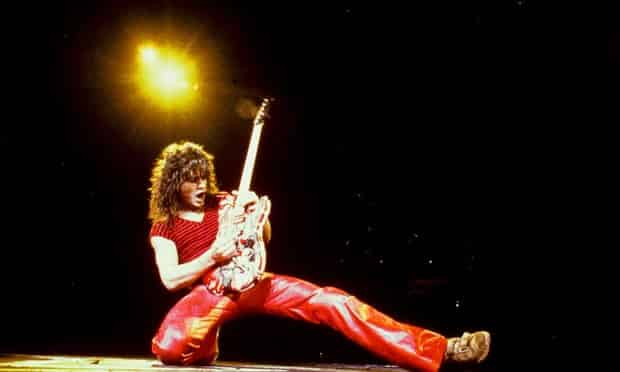Having a variety of piano compositions in your repertoire is crucial for piano playing. This will allow you to hone your abilities and technique and make you more aware of piano music’s long history and rich tradition. The most recognizable and significant piano compositions—which every musician should be familiar with—are explored in this article.
Classical Era
The Classical Era lasted from 1730-1820 and saw some of history’s most iconic and influential piano compositions rise. These compositions, by composers such as Bach, Mozart, and Beethoven, laid the foundation for piano music and continue to be studied and performed to this day.
Johann Sebastian Bach’s “Two-Part Inventions” – These short piano pieces were written by Bach as instructional pieces for his students. However, they have become some of history’s most iconic piano compositions. They are known for their technical and melodic complexity, making them an excellent choice for pianists looking to improve their technique.
“Sonatas” by Wolfgang Amadeus Mozart – Mozart’s piano sonatas are regarded as some of the best piano compositions of the classical Era. These songs are well known for their harmony, melody, and proper balance, which makes them an excellent option for pianists wishing to develop their musicianship.
“Sonatas” by Ludwig van Beethoven – Beethoven’s piano sonatas are among history’s most recognizable and significant piano works. The technical and emotional intricacy of these compositions is well-known, making them an excellent option for pianists wishing to develop their skills and expressiveness.
Johann Pachelbel’s Canon in D is a well-known composition that uses a canon to demonstrate its technique. A melody is repeated and stacked with counterpoint voices in this style of music.
Even when performed solo at the piano, Canon in D is an “accompanied canon” because it incorporates other melodies that develop to produce a rich tapestry. Before its rediscovery in the 1960s, the work had fallen out of favor during Pachelbel’s lifetime in the late 1600s. Many rock and pop artists afterward utilized the piece’s characteristic eight-bar progression, and its original version became a standard at weddings. Many music schools, music industry and music lovers still adore the canon in D because it is a classic work.
Romantic Era
The Romantic Era lasted from 1815-1910 and saw the rise of some of history’s most emotive and expressive piano compositions. These compositions, by composers such as Chopin, Schumann, and Liszt, pushed the boundaries of piano music and continue to be studied and performed to this day.
Frédéric Chopin’s “Etudes” are some of the most challenging and expressive piano compositions from the Romantic Era. These pieces are known for their technical difficulty and emotional depth, making them an excellent choice for pianists looking to improve their technique and expressiveness.
Robert Schumann’s “Kreisleriana” – Schumann’s Kreisleriana is a collection of eight-character pieces for solo piano. These pieces are known for their emotional depth and evocative titles, making them an excellent choice for pianists looking to improve their expressiveness.
The “Transcendental Etudes” by Franz Liszt are regarded as some of the most challenging and technically demanding piano pieces in history. These compositions are also renowned for their technical complexity, which makes them a great option for pianists wishing to advance their skills.
Modern Era
The Modern Era began in the late 19th century and continues today and has seen the rise of some of history’s most innovative and experimental piano compositions. These compositions, by composers such as Debussy, Scriabin, and Prokofiev, have pushed the boundaries of piano music and continue to be studied and performed to this day.
Claude Debussy’s “Estampes” – Debussy’s Estampes is a collection of three solo piano pieces, each evoking a different image or atmosphere. These pieces are known for their innovative harmonies and evocative titles, making them a great choice.
For pianists looking to explore new pianos sounds and styles, Alexander Scriabin’s “Piano Sonatas” – Scriabin’s piano sonatas are considered some of the most innovative and experimental compositions of the Modern Era. These pieces are known for their use of dissonance and atonality, making them an excellent choice for pianists looking to push the boundaries of piano music.
Sergei Prokofiev’s “Piano Sonatas” – Prokofiev’s piano sonatas are considered some of the most dynamic and virtuosic compositions of the Modern Era. These pieces are known for their rhythm and dissonance, making them great for pianists exploring new sounds and styles.
Conclusion
In conclusion, pianists must have a diverse and well-rounded repertoire of piano compositions. The compositions discussed in this article are only a few iconic and influential piano compositions. Exploring different eras, styles, and composers is vital to develop various skills and techniques. Learning and performing these compositions will also give pianists a deeper understanding and appreciation of piano music’s rich history and tradition.
Author bio
Alina Cooper is a senior Writer at a reputed multinational firm in Dubai. She obtained her master’s degree in Management from the University of Singapore. She has been closely associated with the Music Industry and is a noted member of Music Store help for the past five years.




Awesome list! I totally agree with your picks; they’re the foundation every pianist should have at least some familiarity with. I’d love to throw in a couple suggestions for anyone looking to dig a little deeper:
Clara Schumann: Romantic-era composer and virtuoso pianist. Her Piano Concerto and shorter solo works like Romances are beautiful and very expressive, like her Romance in F Major.
Cécile Chaminade: French composer. Her Concert Études and Automne are super charming and full of character. She also composed lots of music for beginners.
Thank you for your comment that’s excellent advice.
provides a comprehensive list of essential piano compositions that every player should know. From classical to contemporary, this list covers a wide range of genres and skill levels.
Thanks Joseph